Lorsqu'il s'agit de projets de construction, en particulier ceux impliquant des dalles en béton, peu de matériaux sont aussi cruciaux que les suivants platelage métallique pour le béton. Cela n'a peut-être rien de prestigieux, mais le tablier métallique est l'un des héros méconnus qui assurent la solidité et la sécurité des bâtiments. Qu'il s'agisse d'une structure commerciale, d'un immeuble de grande hauteur ou même d'un parking, le platelage métallique offre la résistance et la durabilité nécessaires pour créer facilement des dalles en béton armé.
Ce guide aborde tous les aspects des revêtements métalliques pour le béton. Nous présentons les différents types, le processus de travail, les composants clés, l'efficacité des machines et bien d'autres choses encore. En outre, vous apprendrez à choisir le bon fournisseur, à peser le pour et le contre et à éviter les pièges les plus courants dans les projets de revêtement métallique.
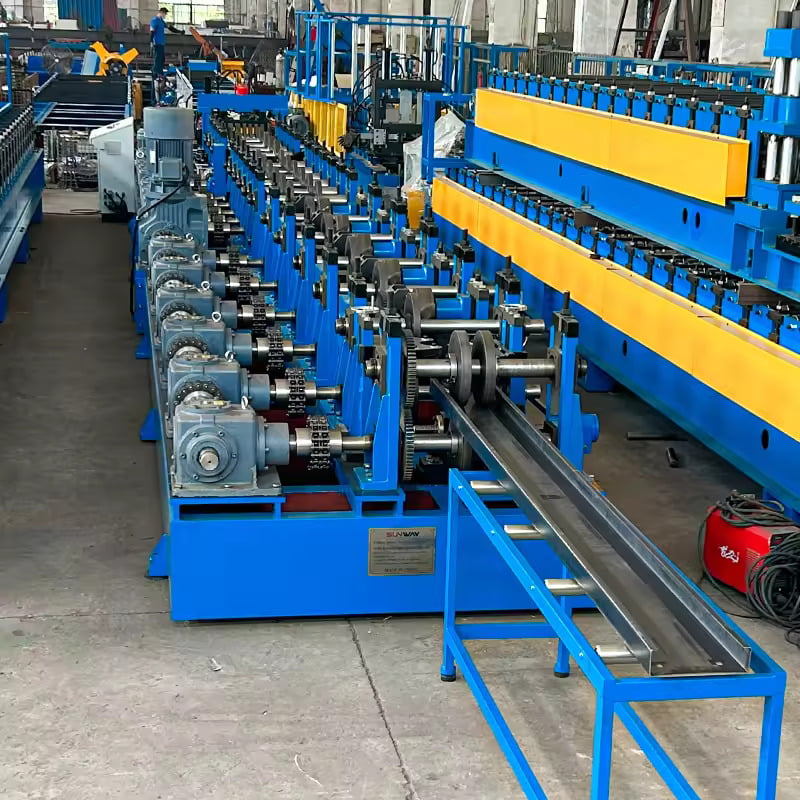
Qu'est-ce qu'une terrasse métallique pour le béton ?
Le platelage métallique pour le béton fait référence à la tôle ondulée qui sert d'élément structurel dans les dalles de béton armé. Il est largement utilisé dans la construction en raison de sa capacité à servir de coffrage permanent et d'élément de renforcement pour les dalles de béton. Essentiellement, le platelage agit comme un moule ou une base où le béton est coulé, et il fournit une résistance supplémentaire, réduisant le besoin de coffrage traditionnel et de matériaux d'armature supplémentaires.
Présentation du rôle des tôles ondulées dans la construction
L'utilisation de la tôle ondulée dans la construction est très répandue, notamment pour renforcer le béton. Ces tôles ne sont pas seulement esthétiques. Elles jouent un rôle crucial en supportant les charges pendant le processus de construction et en les répartissant uniformément dans la structure.
La forme ondulée des tôles est un moyen naturel de maximiser la résistance. Tout comme une feuille de papier pliée en accordéon a plus de poids, les rainures de la tôle ondulée lui confèrent plus de force et de stabilité. Mais ce n'est qu'un début. Voyons pourquoi les platelages métalliques changent tellement la donne pour les travaux de bétonnage.
Vue d'ensemble Revêtement métallique pour le béton Les types
Les terrasses métalliques se déclinent en différents modèles, chacun étant conçu pour répondre à des besoins spécifiques. Vous trouverez ci-dessous un tableau complet des types de platelages métalliques, décrivant leurs principales caractéristiques et applications dans l'industrie.
| Type de terrasse métallique | Description | Meilleure utilisation pour | Caractéristiques principales |
|---|---|---|---|
| Terrasse en métal composite | Ce type de terrasse est conçu pour adhérer au béton, offrant ainsi une résistance supplémentaire à la dalle. | Bâtiments à plusieurs étages, bureaux et parcs de stationnement | Crée une liaison plus forte avec le béton, réduit la nécessité d'une armature supplémentaire. |
| Form Decking | Principalement utilisé comme coffrage pour les dalles de béton sans armature. | Applications temporaires ou projets où le renforcement n'est pas nécessaire | Rentable, idéal pour les solutions non permanentes |
| Terrasse cellulaire | Comprend une tôle de fond pour cacher les services mécaniques et électriques dans le système de plancher. | Bâtiments commerciaux où l'esthétique est importante | Permet une finition plus propre du plafond, dissimule les utilités |
| Planches de terrasse en métal ondulé | Feuilles ondulées de base utilisées dans la construction pour le renforcement du béton. | Bâtiments industriels et commerciaux | Solide, léger, rentable |
| Terrasse en composite cellulaire | Combine les propriétés des terrasses composites et cellulaires. | Bâtiments de grande taille, zones à forte circulation | Offre une résistance et une gestion des utilités en un seul produit |
| Pont de forme non composite | Utilisé lorsque la dalle de béton n'a pas besoin d'être renforcée par un platelage métallique. | Terrasse de toit | Léger, peu coûteux |
| Punch Decking | Les terrasses perforées permettent une meilleure absorption du son. | Auditoriums, théâtres ou espaces de bureaux | Améliore l'acoustique, léger |
| Revêtements métalliques acoustiques | Conçu pour absorber le son. | Stades, arènes, salles de concert | Réduit l'écho et la réverbération |
| Terrasse à longue portée | Conçus pour couvrir de grandes portées sans support. | Entrepôts, aéroports | Réduit le besoin de poutres de soutien |
| Planches de terrasse à haute résistance | Spécialement conçu pour les applications lourdes. | Bâtiments industriels, structures lourdes | Peut supporter des charges extrêmes |
Choisir le bon type pour votre projet
Alors, quelle terrasse métallique convient le mieux à votre projet ? Cela dépend de vos besoins. Si vous travaillez sur un bâtiment à plusieurs étages, les terrasses en matériau composite offrent une durabilité et une résistance accrues par rapport aux terrasses en béton armé. D'autre part, les terrasses cellulaires sont parfaites si l'esthétique est importante, comme dans les bâtiments commerciaux haut de gamme où l'on souhaite dissimuler les services publics.
Comment fonctionne une terrasse métallique pour le béton ?
Il est essentiel de comprendre le fonctionnement des terrasses métalliques pour faire le bon choix. Voici une description simple du processus de fonctionnement des terrasses en métal pour le béton :
- Installation: Tout d'abord, le platelage métallique est posé sur des poutres en acier ou d'autres structures de soutien. Le platelage est généralement fixé à l'aide d'attaches mécaniques telles que des vis ou des goujons à souder afin d'assurer sa stabilité pendant le coulage du béton.
- Renforcement: Après avoir fixé le platelage métallique, des barres d'armature ou un treillis sont souvent placés sur le platelage. Cette étape permet de renforcer l'intégrité structurelle de la dalle.
- Couler le béton: Ensuite, le béton humide est coulé sur le platelage. Le platelage agit comme un moule ou une forme pour le béton, le maintenant en place pendant qu'il durcit.
- Action composite: En durcissant, le béton se lie aux nervures du tablier métallique, formant ainsi une dalle composite. Ce système utilise les forces des deux matériaux : la résistance à la compression du béton et la résistance à la traction de l'acier.
- Processus de maturation: Après la prise du béton, la dalle composite continue de durcir et gagne en résistance au fil du temps. Le platelage reste en place, servant d'élément structurel permanent.
-
 Machine de formage de rouleaux de poteau de vignoble
Machine de formage de rouleaux de poteau de vignoble -
 Machine de formage de rouleaux de panne Sigma à taille variable automatique
Machine de formage de rouleaux de panne Sigma à taille variable automatique -
 Petit pain de cadre d'armoire électrique formant la machine
Petit pain de cadre d'armoire électrique formant la machine -
 Machine de formage de rouleaux de rail DIN
Machine de formage de rouleaux de rail DIN -
 Rouleau d'échelle de câble formant la machine
Rouleau d'échelle de câble formant la machine -
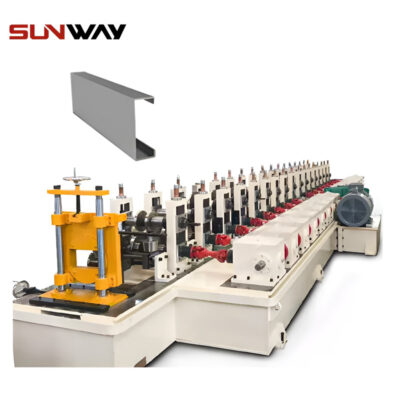 Support de montage PV Profilé en forme de C formant la machine
Support de montage PV Profilé en forme de C formant la machine -
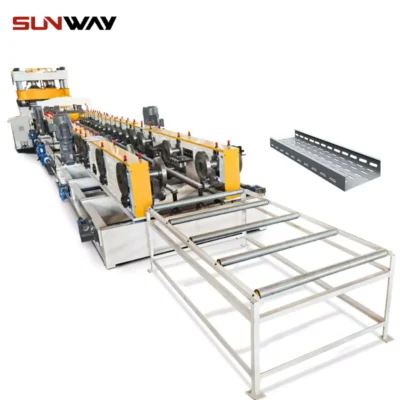 Rouleau de chemin de câbles formant la machine
Rouleau de chemin de câbles formant la machine -
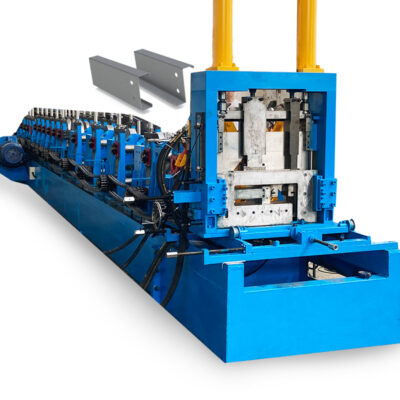 Laminage à froid de canal de panne de CZ formant le profil en acier galvanisé par pleine automatique de machine
Laminage à froid de canal de panne de CZ formant le profil en acier galvanisé par pleine automatique de machine -
 Machine de formage de rouleaux de support de montage PV (profil HAT / Omega)
Machine de formage de rouleaux de support de montage PV (profil HAT / Omega)
Les composants clés et leurs fonctions
Chaque composant d'un système de terrasse métallique joue un rôle essentiel. Le tableau ci-dessous présente les principaux composants et leurs fonctions.
| Composant | Fonction |
|---|---|
| Feuilles de métal pour terrasses | Servent de coffrage de base pour le coulage du béton et fournissent un support structurel. |
| Connecteurs à cisaillement | Veillez à ce que le tablier métallique et le béton agissent ensemble comme une unité composite. |
| Barres de renforcement | Renforcer la dalle de béton, en évitant les fissures et en augmentant la résistance à la traction. |
| Attaches (vis/goujons à souder) | Fixer le tablier métallique aux poutres d'acier et maintenir la structure en place pendant le coulage du béton. |
| Poutres de soutien | Ils constituent l'ossature sur laquelle repose la terrasse et offrent une capacité de charge supplémentaire. |
Vitesse et efficacité des machines dans la production de planches métalliques
Les projets de construction modernes exigent une installation rapide et efficace des terrasses métalliques afin de respecter les délais. La vitesse et l'efficacité des machines jouent un rôle crucial à cet égard. Voici comment les différentes machines contribuent à la production de lames de terrasse :
| Type de machine | Vitesse (feuilles/heure) | Efficacité |
|---|---|---|
| Machines de formage de rouleaux | 30-60 feuilles par heure | Haute précision, temps de préparation rapide, profils de pont personnalisables |
| Machines de coupe à longueur | 40-80 feuilles par heure | Très efficace pour les projets de grande envergure, minimise les déchets |
| Machines pour l'installation des terrasses | 20-50 feuilles par heure | Assure une installation régulière et une fixation correcte des feuilles |
Les profileuses, par exemple, sont réputées pour leur rapidité et leur précision, car elles créent des profils de tabliers métalliques plus rapidement que les procédés manuels. Ces machines sont idéales pour les grands projets de construction qui nécessitent une production en grande quantité.
Paramètres mécaniques personnalisés pour les planchers métalliques
La personnalisation des tabliers métalliques permet aux projets de répondre à des spécifications techniques uniques. Vous trouverez ci-dessous un tableau des paramètres mécaniques personnalisés qui peuvent être ajustés pour différents projets.
| Paramètres | Gamme | Objectif |
|---|---|---|
| Épaisseur du pont | 0,75 mm - 1,5 mm | Ajustement de la résistance et de la capacité de charge pondérale |
| Capacité de la travée | 3 m - 6 m | Définit la distance que les terrasses métalliques peuvent couvrir entre les supports. |
| Capacité de poids | 500 kg/m² - 1500 kg/m² | Indique la charge que la terrasse peut supporter |
| Profondeur du profil | 50 mm - 100 mm | Affecte l'adhérence et la rigidité de la terrasse avec le béton. |
| Type de finition | Galvanisé, peint, enduit | Résistance à la rouille et finition esthétique |
Les différentes épaisseurs et portées permettent de varier la résistance et le soutien, ce qui garantit que chaque projet est conçu pour répondre aux exigences de charge et aux besoins architecturaux spécifiques.
Applications des revêtements métalliques pour le béton
Maintenant que vous savez comment fonctionnent les terrasses métalliques, il est important de comprendre leur large éventail d'applications. Vous trouverez ci-dessous un tableau indiquant où les terrasses métalliques sont couramment utilisées et pourquoi elles sont choisies pour ces zones particulières.
| Application | Pourquoi les terrasses en métal sont-elles utilisées ? |
|---|---|
| Immeubles de grande hauteur | Solide, durable et léger, il réduit le besoin de poutres ou de supports supplémentaires. |
| Terrasses de parking | Supporte les charges lourdes des véhicules, tout en étant rapide à installer. |
| Bâtiments commerciaux | Permet des conceptions à longue portée, créant des espaces ouverts sans colonnes supplémentaires. |
| Entrepôts | Offre une capacité de charge élevée et une grande durabilité dans les grands espaces. |
| Ponts | Fournit une base légère mais solide pour le béton. |
| Bâtiments résidentiels | Elle est rentable et permet d'accélérer les délais de construction. |
Installation, fonctionnement et entretien des Revêtement métallique pour le béton
Une solide compréhension des éléments suivants installation, fonctionnement et entretien maintiendra votre système de terrasse en parfait état. Voici comment obtenir les meilleures performances de votre système de terrasse métallique.
| Stade |
| Installation |
| Fonctionnement |
| Maintenance |
Fournisseurs et fourchette de prix pour les terrasses en métal pour le béton
Le prix des terrasses métalliques varie en fonction de l'épaisseur du matériau, du profil et du fournisseur. Vous trouverez ci-dessous un guide des fournisseurs et des prix pour vous aider à prendre une décision en connaissance de cause.
| Fournisseur | Fourchette de prix (par mètre carré) | Localisation |
|---|---|---|
| ABC Decking | $5.50 – $8.00 | Dans l'ensemble des États-Unis |
| XYZ Construction Metals | $4.75 – $7.25 | Europe et États-Unis |
| BuildMaster Decking | $6.00 – $9.00 | Asie et États-Unis |
| MetalWorks Supply | $5.00 – $7.75 | Mondial |
| Decking Pros Inc. | $5.25 – $7.50 | Amérique du Nord |
Comment choisir le bon fournisseur de terrasses en métal
Lors de la sélection d'un fournisseur de terrasses métalliques, plusieurs facteurs doivent être pris en compte. Voici comment faire le meilleur choix :
| Facteur | Ce qu'il faut prendre en compte |
|---|---|
| Tarification | Comparez les prix entre plusieurs fournisseurs, mais ne sacrifiez pas la qualité au coût. |
| Délai d'exécution | Assurez-vous que le fournisseur peut respecter le calendrier de votre projet. Certains fournisseurs offrent des délais plus courts que d'autres. |
| Options de personnalisation | Le fournisseur peut-il proposer des profils, des épaisseurs ou des finitions sur mesure ? |
| Service client | Un service clientèle fiable est important pour résoudre les problèmes ou répondre aux questions. |
| Réputation | Consultez les revues et les études de cas des projets antérieurs du fournisseur pour évaluer leur qualité. |
Avantages et inconvénients des terrasses en métal pour le béton
Chaque produit a ses avantages et ses inconvénients, et le platelage métallique pour béton ne fait pas exception à la règle. Voici un comparatif pour vous aider à comprendre ses atouts et ses limites.
| Avantages | Inconvénients |
|---|---|
| Léger et facile à installer | Le coût initial est plus élevé que celui d'un coffrage traditionnel |
| Réduit la nécessité d'un renforcement supplémentaire | Susceptibles d'être corrodés s'ils ne sont pas correctement revêtus |
| Permet une construction plus rapide | Nécessite un entretien et une inspection réguliers |
| Peut s'étendre sur de longues distances, ce qui réduit le besoin de colonnes | Options de conception limitées pour les projets hautement personnalisés |
| Donne un aspect propre et fini aux plafonds | Peut nécessiter des supports temporaires supplémentaires pendant le durcissement du béton |
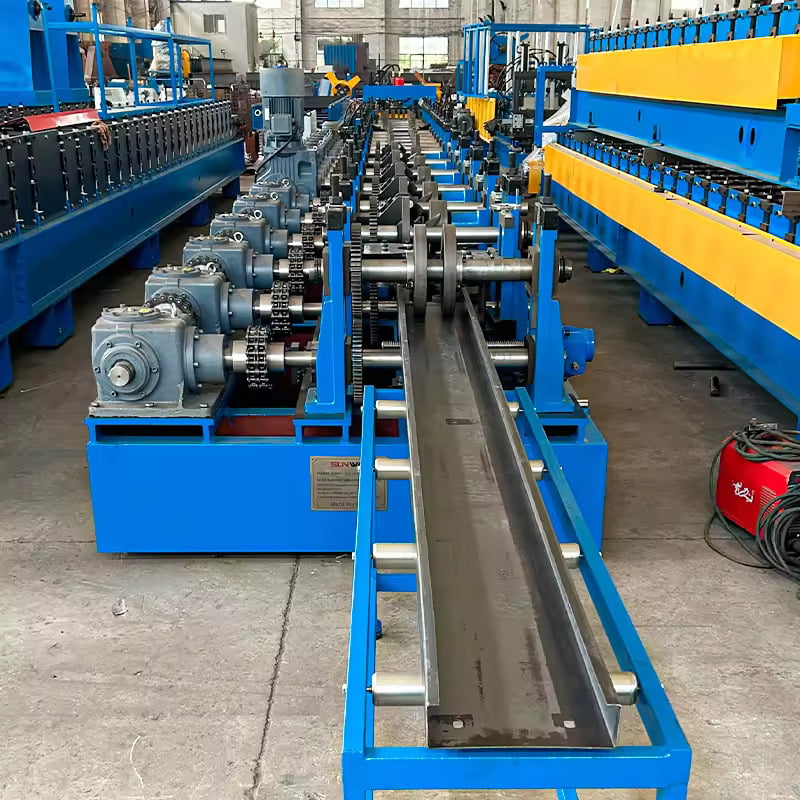
FAQ
| Question | Réponse |
|---|---|
| Quelle est la durée de vie d'un revêtement métallique pour le béton ? | Lorsqu'elles sont correctement installées et entretenues, les terrasses métalliques peuvent durer plus de 50 ans. |
| Les terrasses en métal pour le béton nécessitent-elles un entretien ? | Oui, des inspections régulières doivent être effectuées pour vérifier la corrosion et l'intégrité structurelle. |
| Les terrasses métalliques peuvent-elles être utilisées dans des projets résidentiels ? | Tout à fait ! Il est rentable et réduit le temps de construction des bâtiments résidentiels. |
| Quelle doit être l'épaisseur de ma terrasse métallique ? | Cela dépend de vos exigences en matière de charge. En général, on utilise des épaisseurs de 0,75 mm à 1,5 mm. |
| Les terrasses métalliques sont-elles résistantes au feu ? | Les terrasses métalliques ne sont pas ignifuges en elles-mêmes, mais elles peuvent être recouvertes de matériaux ignifuges pour améliorer la sécurité. |
Conclusion
Terrasse métallique pour béton joue un rôle essentiel dans la construction moderne. Il offre une combinaison de résistance, d'efficacité et de durabilité qui le rend idéal pour renforcer les dalles de béton dans diverses applications, des immeubles de grande hauteur aux ponts. En choisissant le bon type de platelage, en comprenant son processus de fonctionnement et en sélectionnant un fournisseur réputé, vous pouvez assurer la réussite de votre projet de construction.
